#narrowmouthed toad
Explore tagged Tumblr posts
Text
TARANTULA WITH A PET FROG?
Well, not exactly.

Colombian Lesser Black Tarantula (Xenesthis immanis), family Theraphosidae
Dotted Humming Frog (Chiasmocleis ventrimaculata), family Microhylidae
- The 2 species occur together in Peru, Ecuador, Colombia, and Venezuela.
This relationship is sometime framed as "Tarantula with a pet frog"
This is thought to be a symbiotic relationship, probably mutualistic.
The frog lives in the female tarantula's burrow, feeding on prey leftovers and ants (which would harm the eggs or spiderlings).
This is very specific to these species, as this species of tarantula will attack and prey on similar species of frog.

photographs by Emanuele Biggi

(Photo - @rainmaker1973/Twitter)
#spider#tarantula#arachnid#xenesthis#theraphosidae#frog#narrowmouth toad#amphibian#microhylidae#humming frog#animals#nature#south america
429 notes
·
View notes
Note
youtube
His mouth is small and he must scream
not sure if I've got a better picture of it, but while in pursuit of a separate frog, found this one below. Couldn't have been bigger than a oak tree's acorn and initially misidentified it as a rock, didn't really know they could have proportions like that.

This is a Gastrophryne species. It is *probably* G. carolinensis, but it could also be G. olivacea. You'd have to have a photo of the belly to be sure. The belly of the former is generally dark with light spots, whereas that of the latter is generally grey to white without spots.
These are narrow-mouthed frogs, family Microhylidae, and members of the subfamily Gastrophryninae show off that narrow-mouthedness very well indeed. These kinds of proportions are pretty common in microhylids, and fairly rare in other families.
#WAAAAAAAH#narrowmouthed toad#I'm familiar with the eastern variety and I love them with my entire soul#They are so shaped#Youtube
96 notes
·
View notes
Text
Narrowmouth toads make the best sounds 🤎
66 notes
·
View notes
Photo

This extremely tiny specimen is Gastrophryne olivacea, more commonly known as the Great Plains narrow-mouthed frog. Rarely exceeding an inch and a half in length, these microhylids have a surprisingly loud breeding call which can be heard from March to September in the Great Plains region of North America. Image by J.D. Willson.
#great plains narrow-mouthed frog#narrow-mouthed frog#narrowmouthed frog#narrowmouthed toad#toad#frog#herps#amphibians#animals#nature
990 notes
·
View notes
Text
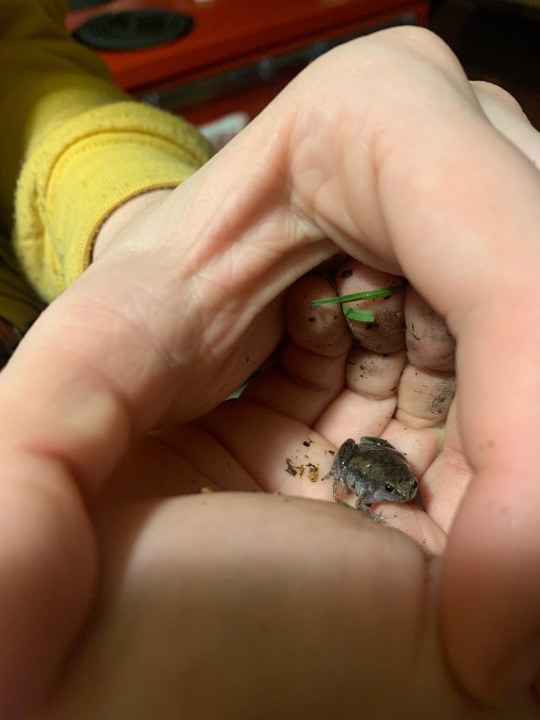
Sir you are illegally small
#frog blogging#frogcore#frogs#frog#toad#narrow mouth toad#narrowmouth toad#frog blog#frogblog#goblincore#cozycore#cottagecore#cute#cute frog#herping#herpetology#herptiblr#herpetofauna#toads#farmcore#like narrow mouths r already small but this is a FELONY#fox found him while collecting some dirt outside for something or other#she lit DUG HIM UP
3K notes
·
View notes
Text
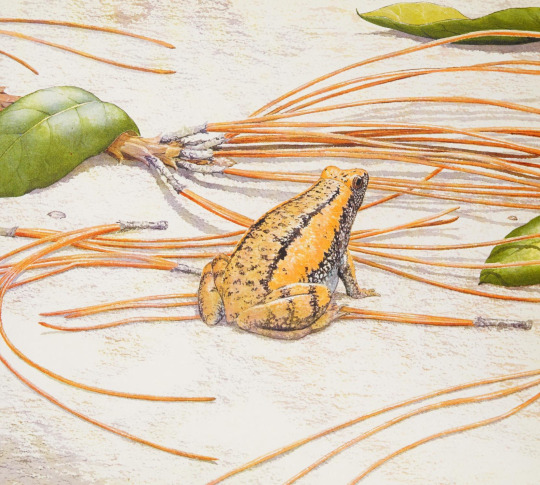
About Amphibians: A Guide for Children, written by Cathryn Sill and illustrated by John Sill, 2000.
148 notes
·
View notes
Text

This red-shouldered hawk's family has nested in our yard for around 15 years now.
We have finches, sparrows, cardinals, wrens, chickadees, blue birds, robins, grackles, phoebes, tufted titmice, yellow-throated vireos, brown headed cowbirds, mourning doves, and mocking birds galore. Sharing space with the hawk family is a great horned owl, and theres a kestrel family a few houses down. We have green tree frogs, grey tree frogs, squirrel tree frogs, leopard frogs, southern toads, spadefoot toads, narrowmouth toads, and marbled salamanders. We have green anoles, five lined skinks, broadhead skinks, rat snakes, common watersnakes, and black racers. We have innumerable bugs including unique butterflies, moths, native bees, beetles, dragonflies, and spiders. We have mice, wood rats, squirrels, opossums, raccoons, armadillos, and sometimes larger mammals like deer and foxes. I've not seen any skunks in our yard or the neighborhood, but they're probably around too.
What makes our yard so attractive to wildlife? We don't do any yard spraying and we only use targeted insecticides for fire ants (invasive species) and mosquitos (dunks that only kill larvae, mostly we just avoid having standing water). My mom and I have finally convinced my dad to mow more minimally, and we try to id volunteer plants and protect them if they're native species. Our purposefully planted native and non-spreading ornamental plants get watered, but thats it. Volunteers get water if they're close to the other stuff, but they usually don't need it unless there's a serious hot and dry spell. We want ground cover, but we don't care about grass, so we don't mind the Carolina ponysfoot and vigina buttonweed over the backyard.
Wildlife likes our yard because we are lazy! We only mow as needed (we have dogs so needs to low enough to not totally hide snakes or be attractive to ticks), leave leaves, and don't spray poison everywhere (also because we have dogs and lawn chemicals increase canine cancer risk). We don't leave lights on outside on purpose and our dogs and cats are primarily indoors. Our next door neighbors also have primarily indoor pets, but they do leave lights on that aren't needed. Theres only one cat that is ever roaming, she's spayed, and she's kept inside most of the year. We've seen her less often in general since she's gotten older, and now allowing cats to roam is illegal in my county.
One of our next door neighbors mows excessively. One across the street has a full, obnoxious service that comes, poisons their yard, partially blocks the road, and makes a bunch of noise. The neighborhood our yard backs up at least at one point did mosquito spraying, which kills way more than just mosquitos.
We don't have an HoA, which helps, and we live outside city limits, but the city has no rules against leaving leaves anyway. Our yard never looks messy either. We put decorative stakes to mark volunteers we don't want mowed so it looks purposeful, and the dandelions and henbit and such honestly look prettier in the spring than a golf course lawn ever does.
The wildlife will find the pockets of refuge if we make them, and its pretty easy to make them if you have a yard while also campaigning for more ecologically friendly city planning, commercial development, and infrastructure. If you have time, you can also loiter in local/neighborhood groups on Facebook or nextdoor and leave comments that are anti-lawn, pro-wildlife, and anti-outdoor only/free roaming dogs and cats on any relevant posts. You can harass lawn and pest companies about how much the "services" they offer suck too if you want, but generally telling some one a fan for their patio will keep mosquitos off them just as well as expensive lawn spray without killing off butterflies works better.
"There's no wildlife here. The land is barren and stripped from farming chemicals"
I just saw two blue herons fly super low over our house, which means they've been fishing in the creek behind us, which means there's fish there. Which means there's bugs to feed the fish and algae to feed the bugs, which means the water and soil is worth something damnit.
Yes, I'm sorry the suburb isn't the grand, sweeping swath of uninhabited land that you so desperately crave but would learn to loathe, but saying that the land here is barren and that there's no wildlife here and that there's nothing to salvage- that's a You problem. Nature might be struggling, but against all odds it is at least trying.
17K notes
·
View notes
Text

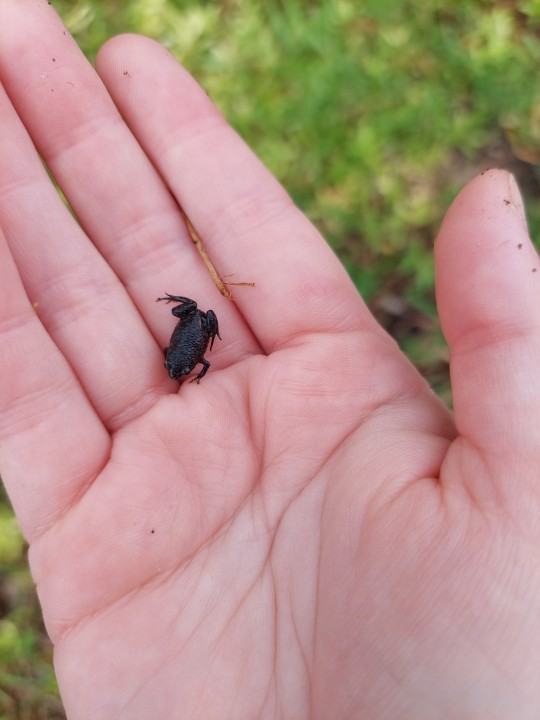
Please enjoy this baby sheep frog
17 notes
·
View notes
Note
What fwoggo is this? Found it on my front porch in Parker County, North Texas.

About an inch long - could be a very young "adult." Wanted to take it to the toad pond but my parents were worried it would drown.
Oh yes I know that one, it is an adult btw.
Great Plains Narrowmouth (Gastrophryne olivacea), family Microhylidae
They are terrestrial, but the can swim.
138 notes
·
View notes
Text
Arright so i saw something really cool in Texas, the kind of thing you read about but don’t expect to actually encounter
I flipped over a rock and found a tarantula sharing its burrow with a tiny narrowmouth toad
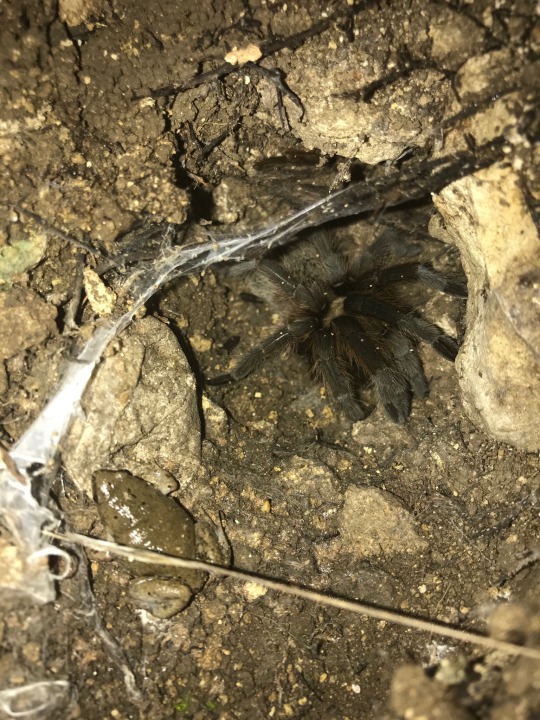
This is a symbiotic relationship where the tarantula provides protection and affordable housing, while the toad feeds on ants that could harm the tarantula or its eggs. Other small frogs, lizards etc. are just prey to tarantulas, but they instinctively recognize and welcome narrowmouth toads for their ant-eradication abilities.
Basically, tarantulas keep tiny toads in their home for the same reason humans domesticated cats. This sort of went viral as a piece of trivia a while back, but there’s not a lot of actual photos showing it.
This isn’t the only case of this I saw either. I saw two other burrows with toads in them, including a massive tarantula that had at least 4-5 toads, but they hopped deeper into the burrow before I could take pics.
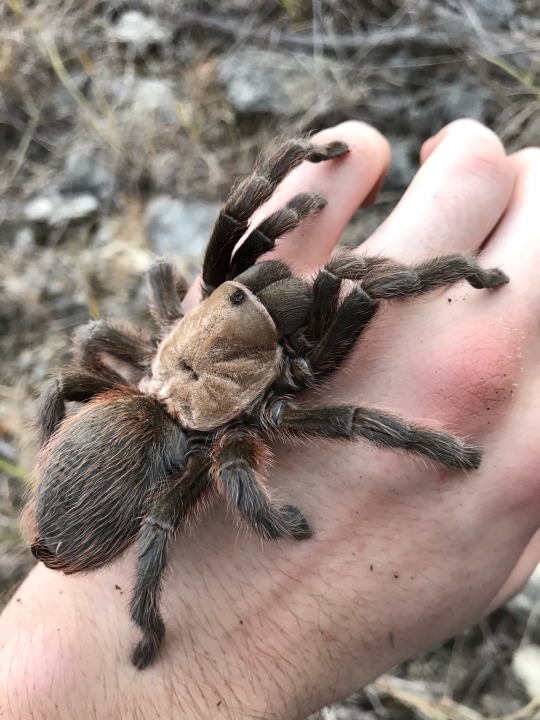
Anyway here’s some better quality photos I took of both animals during the day. The toad is Gastrophryne olivacea and the tarantula is an Aphonopelma species (probably hentzi but their taxonomy is a clusterfuck)
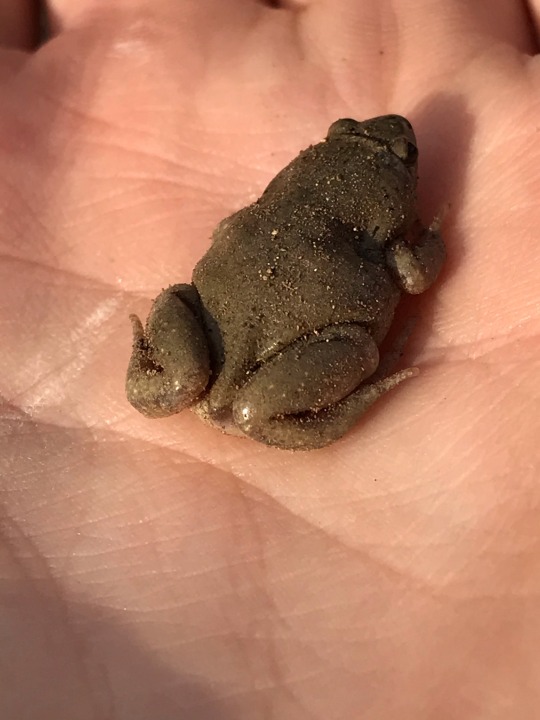
3K notes
·
View notes
Photo
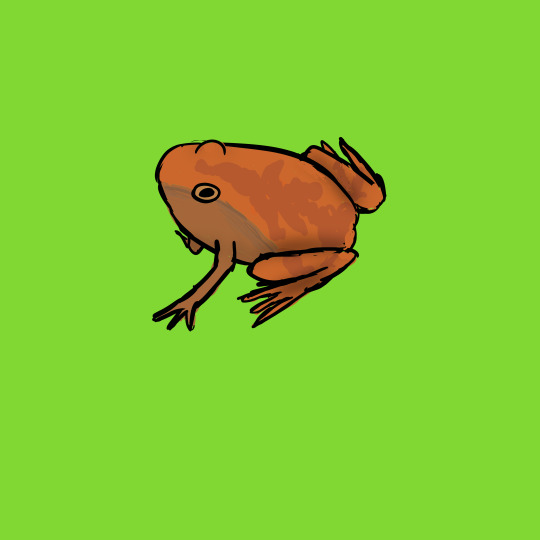
[id: a digital drawing of a reddish-brown toad with splotchy markings against a lime green background. end id]
day 1 of frogtoadber - painted narrowmouth toad! a friend indeed
21 notes
·
View notes
Text
Look, narrowmouth toad sounds are the best sounds. It's just science. And I caught this little lad in full song. 🥹
(I turned the volume of the clip down by 50% and they're still amazingly loud. I love it)
5/23/23.
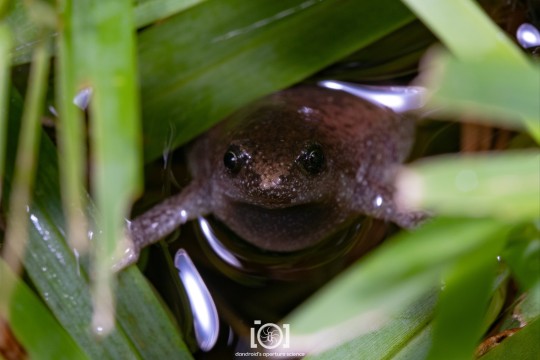
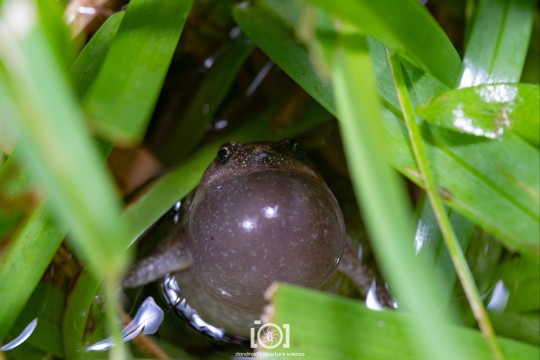
284 notes
·
View notes
Text
May 2021: Saturday Evening Post
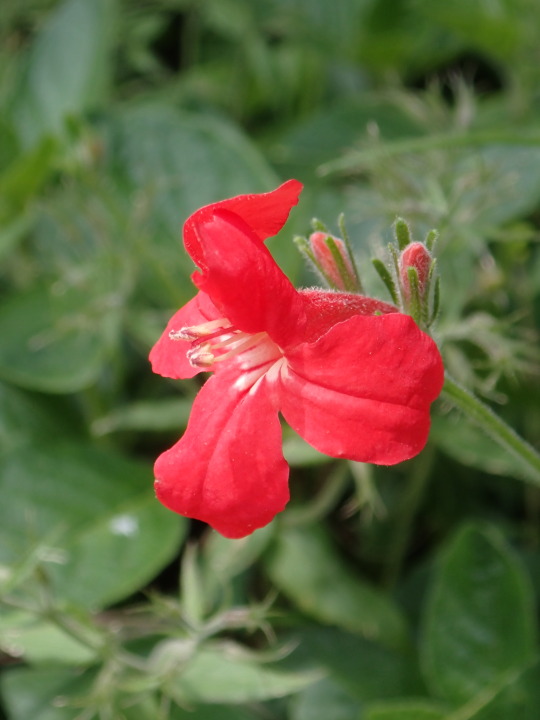
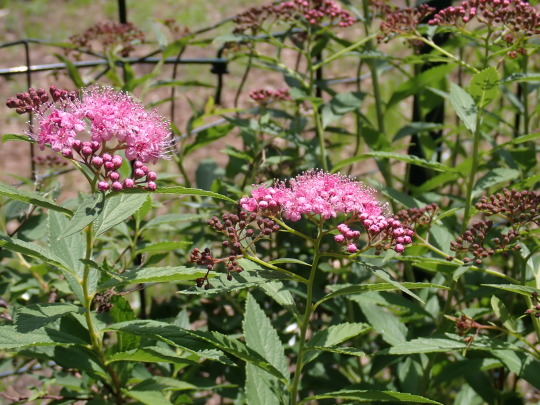
Friday & Saturday strawberries:

Mystery tree. I suspect this is a volunteer from the compost bin so maybe a lemon or orange:

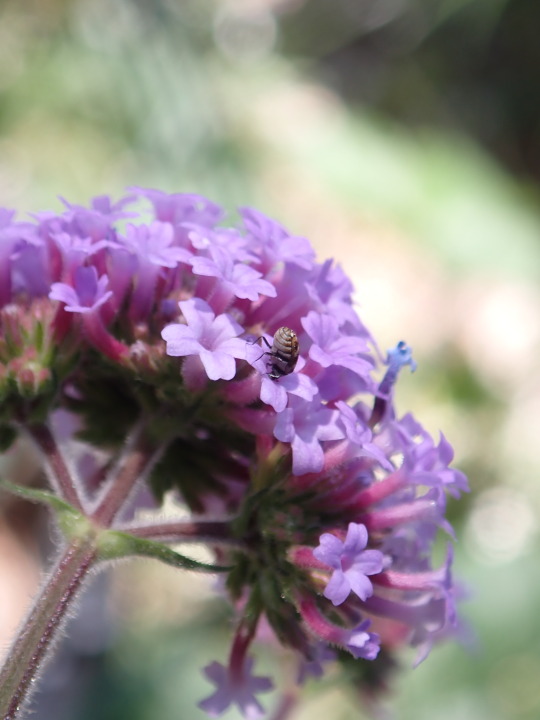
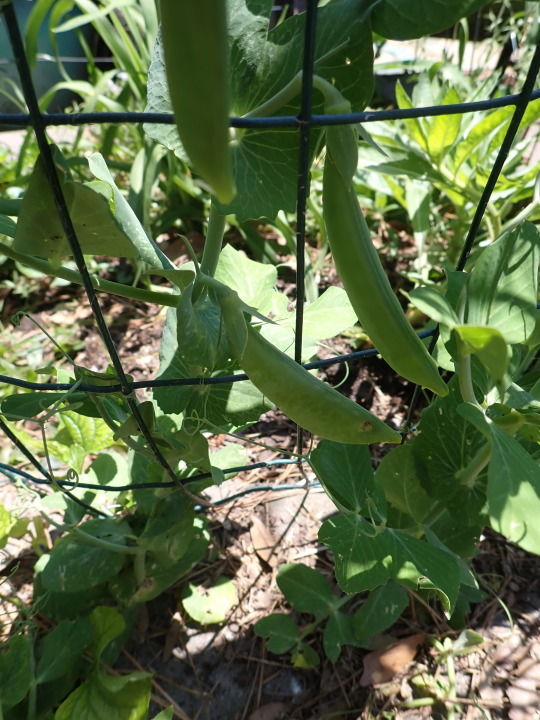
I don’t normally tie our tomatoes to the structure we grow them on. Instead, I thread them through it so the structure & the plants themselves provide the support. This tomato plant is still relatively small so I’m just threading the strongest leaf stems through the fencing to provide support. It requires daily checking to make sure you thread the top-heavy parts back through but I find it way more convenient than tying. Side note - indeterminate tomatoes will outgrow any prefabricated tomato cage that can be bought. It is better & cheaper in the long run to build your own structures:
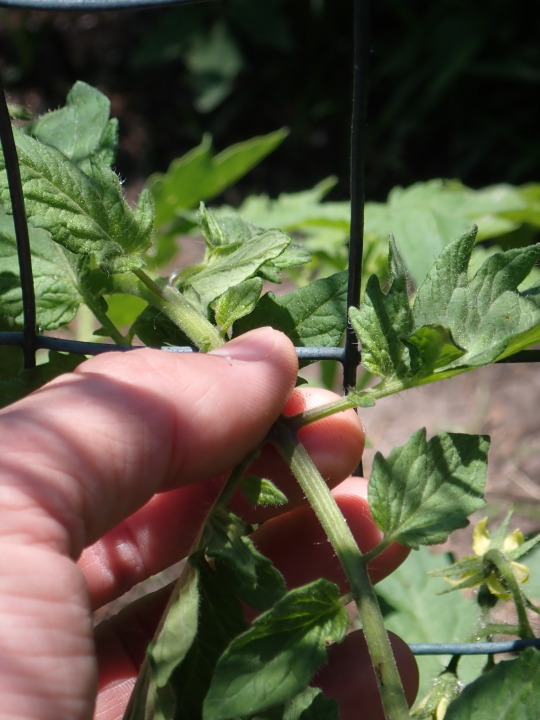
A shot of the backyard garden from the northwest corner facing south:
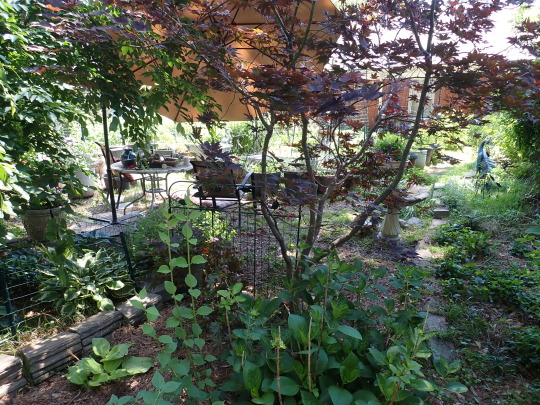
Sweat bee:

All the flowers in bloom in our garden & it would rather crawl on my hairy leg:


We went out to Plot 420 today to do some amending & planting.
Who is this peeping at me from the hole made by our wind spinner?:
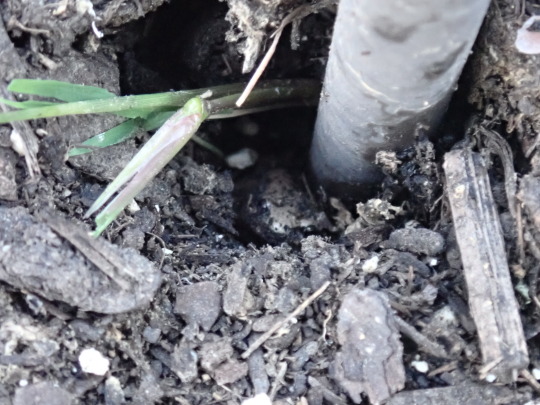
It’s an Eastern Narrowmouth Toad. These guys are hardly rare in our area but, even though I have been a keen overturner of rocks & logs since I was a child, this is the first one that I’ve ever seen. Just a reminder that “common” isn’t always common:

Onions, shallots & leeks planted. They’re planted a little close but we are planning for some failures. If they are all successful, we have space to transplant them into so no worries:
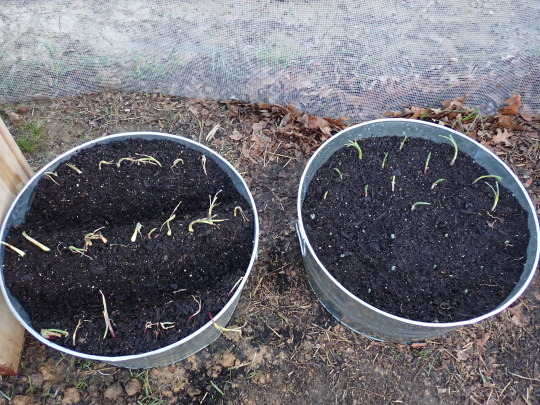
We amended the soil today with bone meal, nitrogen, Garden-tone fertilizer & lime. We also spread out a little garden soil to help up the organic content in some parts of the plot:
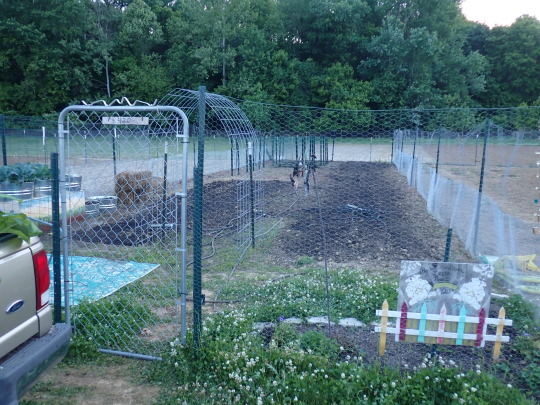


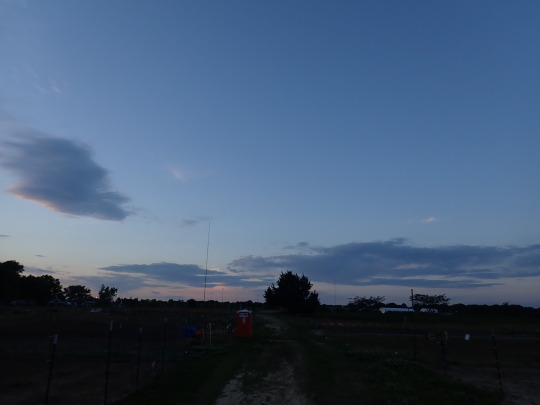


#garden#backyard garden#flowers#ruellia#spirea#strawberries#mystery tree#volunteer plant#verbena#beetle#peas#tomato plant#tiny bee#sweat bee#amphibian#eastern narrowmouth toad#community garden#shelby county community garden#plot 420#onions#sky#clouds#sunset#dusk#life in memphis
2 notes
·
View notes
Audio

[x]
#eastern narrow mouthed toad#eastern narrowmouth toad#narrowmouth toad#toad#audio#frogs#herps#amphibians#animals#nature
872 notes
·
View notes
Note
just a heads-up—looks like that singing frog in the video you reblogged is a crucifix frog (Notaden bennettii), which isn’t a narrowmouthed toad (Microhylidae) as tagged but rather a member of the Australia+New Guinea-endemic family Limnodynastidae (aka Australian ground frogs (in part) or foam-nesting ground frogs)
Thank you. Really appreciate that you took the time to send this message. Sorry for the misdirection. The creature in the video is indeed Notaden bennettii. (Dryland frog whose habits remind me of beloved spadefoot toads of North America. Ought to have known: One memorable field guide that I had as a child described how the endemic frogs of Australian/Oceanian deserved notoriety alongside the more-famous endemic marsupials, and as examples the book referred to and included illustrations/photos of the “most amazing” which included the gastric brooding frog, marsupial frog, and the crucifix frog.) Went and looked up the source of the video. It comes from FrogID Australia’s social media, here:

61 notes
·
View notes
Photo
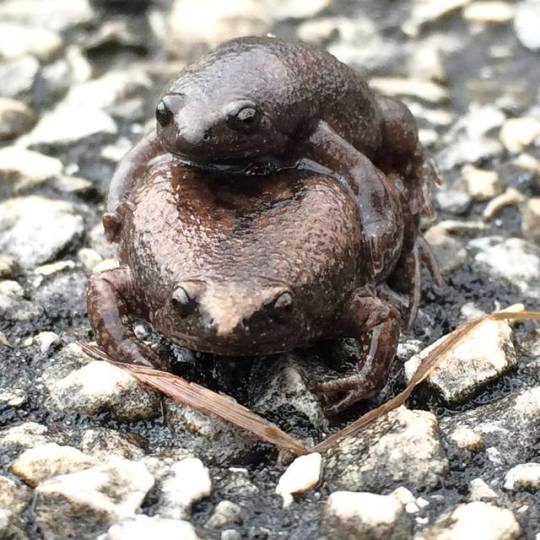

Eastern Narrowmouth toads (Gastrophryne carolinensis) take advantage of the heavy rains at Brazos Bend State Park in SE Texas.
photographs via: Texas Parks and Wildlife
254 notes
·
View notes